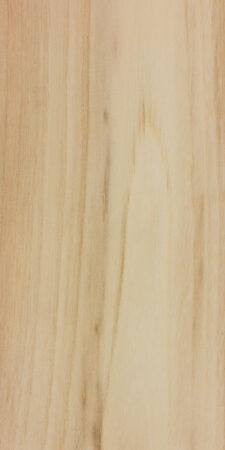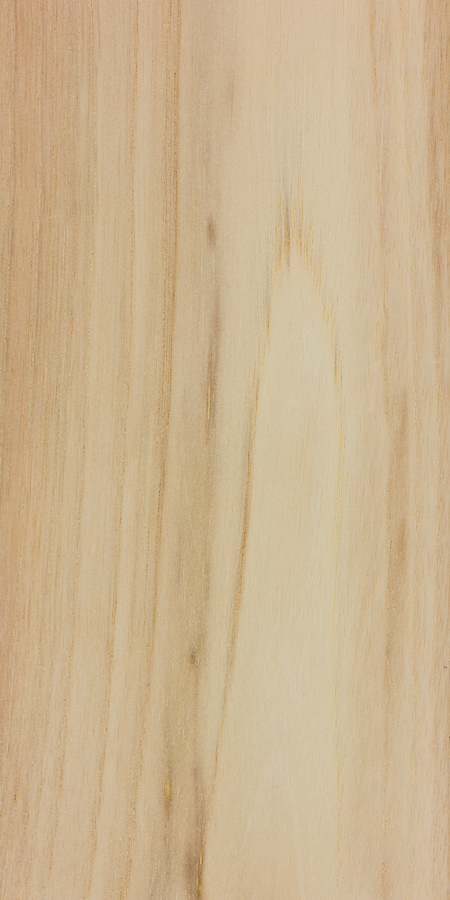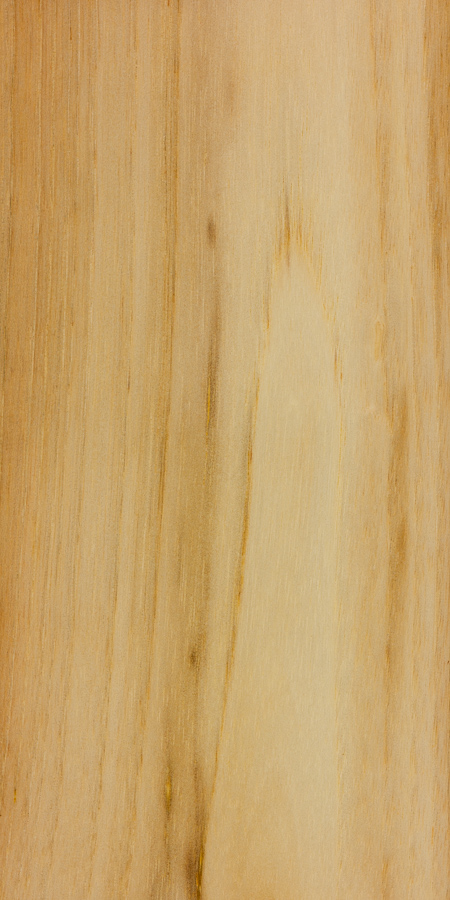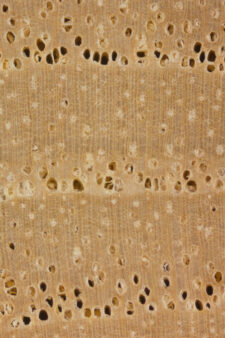Common Name(s): Candlenut, kemiri, candleberry, lumbang
Scientific Name: Aleurites moluccanus
Distribution: Primarily Southeast Asia and Pacific Islands; also found throughout tropical regions worldwide
Tree Size: 65-100 ft (20-30 m) tall,
2-3 ft (.6-1 m) trunk diameter
Average Dried Weight: 24.5 lbs/ft3 (390 kg/m3)
Specific Gravity (Basic, 12% MC): .33, .39
Janka Hardness: 340 lbf (1,520 N)
Modulus of Rupture: 7,380 lbf/in2 (50.9 MPa)
Elastic Modulus: 1,063,000 lbf/in2 (7.33 GPa)
Crushing Strength: 3,820 lbf/in2 (26.3 MPa)
Shrinkage: Radial: ~3%, Tangential: ~6%,
Volumetric: ~9%, T/R Ratio: ~2
Color/Appearance: Heartwood is light brown, with no clear distinction between sapwood and heartwood. Gray or bluish staining is also common.
Grain/Texture: Grain is straight, with a uniform, coarse texture.
Rot Resistance: Rated as non-durable to perishable; poor insect resistance.
Workability: Generally easy to work, though as is the case with very soft woods, care must be taken not to dent or damage it during handling. Also, blue fungal staining can occur if not dried properly.
Odor: No characteristic odor.
Allergies/Toxicity: Although severe reactions are quite uncommon, the sap of candlenut has been reported to cause skin irritation, though it is unclear if the same reaction occurs in the dried wood. See the articles Wood Allergies and Toxicity and Wood Dust Safety for more information.
Pricing/Availability: Generally, the wood is too soft and weak to be used for structural applications, and the tree is considered to be more valuable for its nuts than for its lumber.
Sustainability: This wood species is not listed in the CITES Appendices or on the IUCN Red List of Threatened Species.
Common Uses: Plywood, utility lumber, interior woodwork, paneling, and kitchen utensils.
Comments: So named for the oil taken from the tree’s nuts, which was used in lamps. Candlenut is known much more for its edible nuts than its wood, and the tree has been cultivated in numerous tropical regions worldwide. Candlenut goes by almost as many names as there are regions where it is grown.
Images: Drag the slider up/down to toggle between raw and finished wood.
Identification: See the article on Hardwood Anatomy for definitions of endgrain features.
Porosity: diffuse porous (or ring-porous to semi-ring-porous depending on growing conditions)
Arrangement: solitary and radial multiples
Vessels: large to very large, few to very few
Parenchyma: diffuse-in-aggregates
Rays: narrow; normal spacing
Lookalikes/Substitutes: None.
Notes: This species is generally diffuse porous, though this sample shows a ring porous pattern, possibly due to more temperate growing conditions.
The Aleurites genus currently contains only two species, A. moluccanus and the much more obscure A. rockinghamensis.
Related Content:












Suggest adding Kukui as a common name.